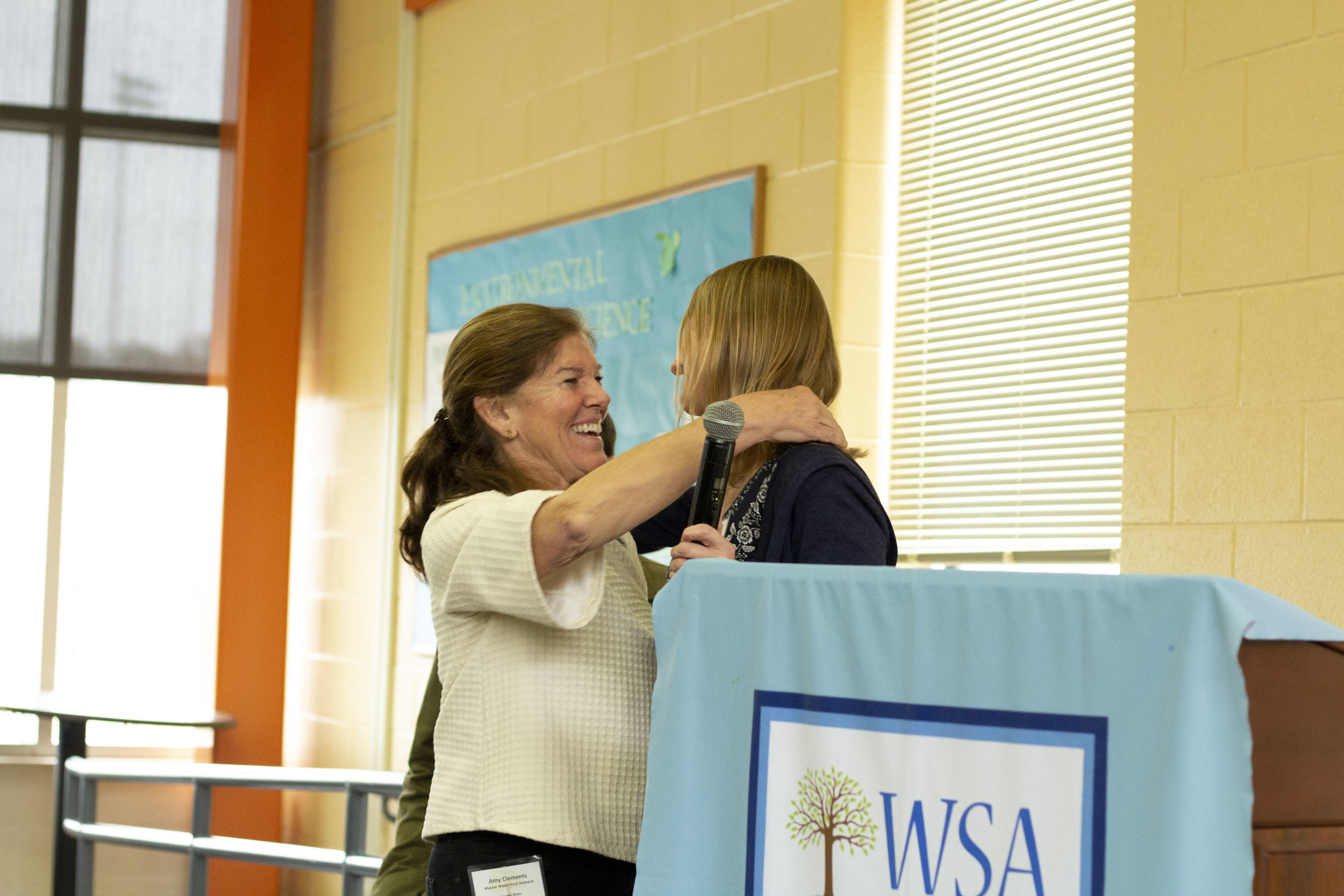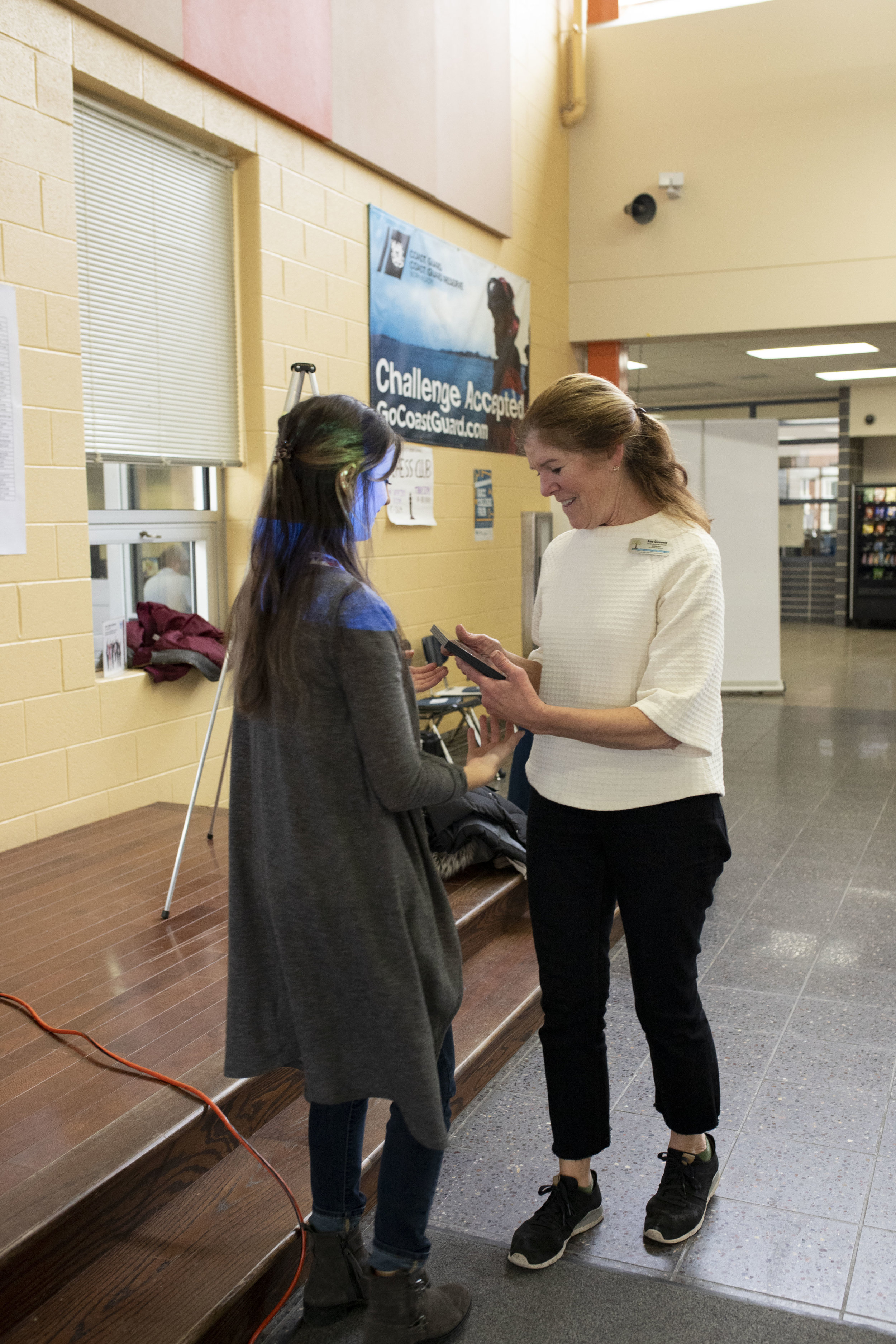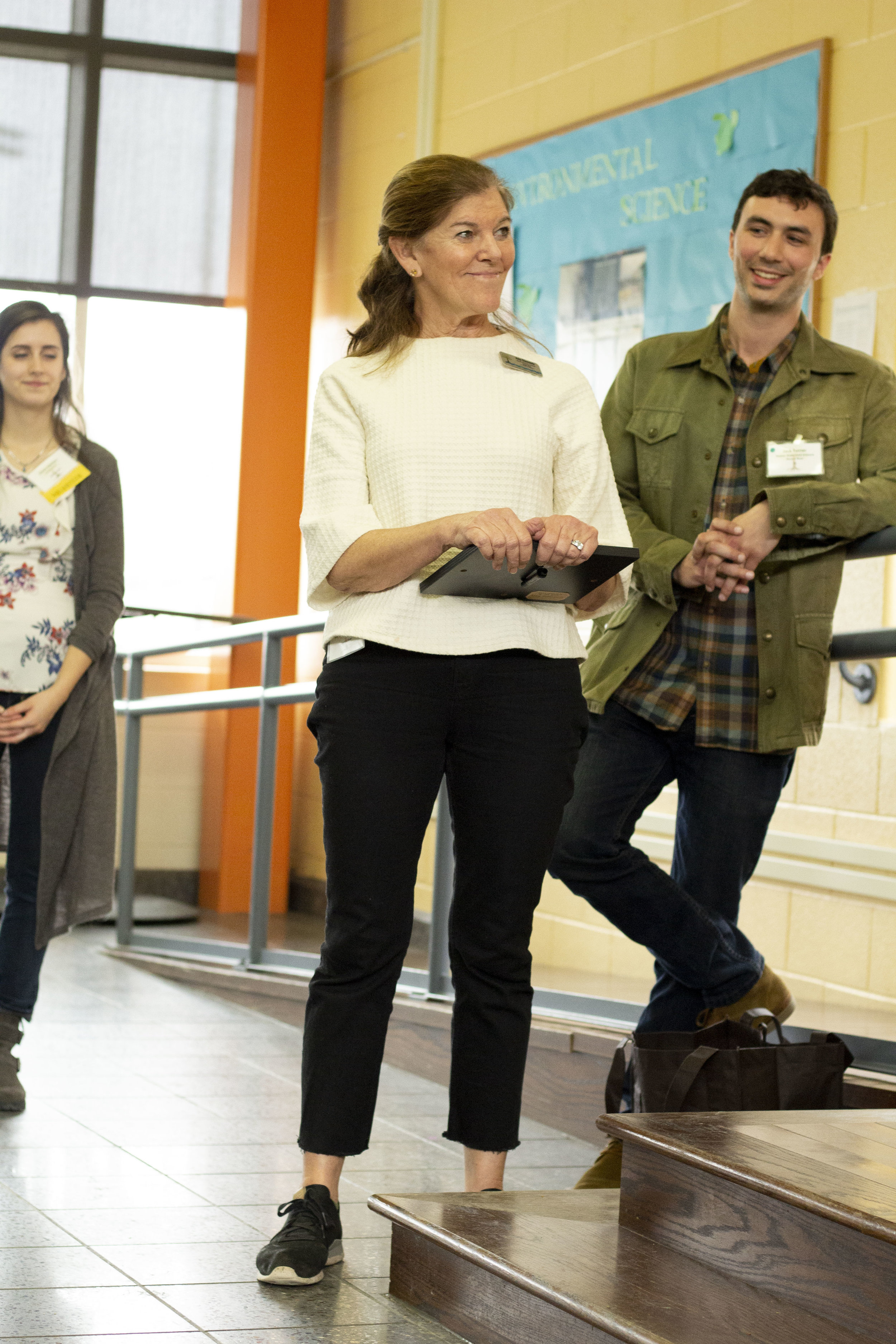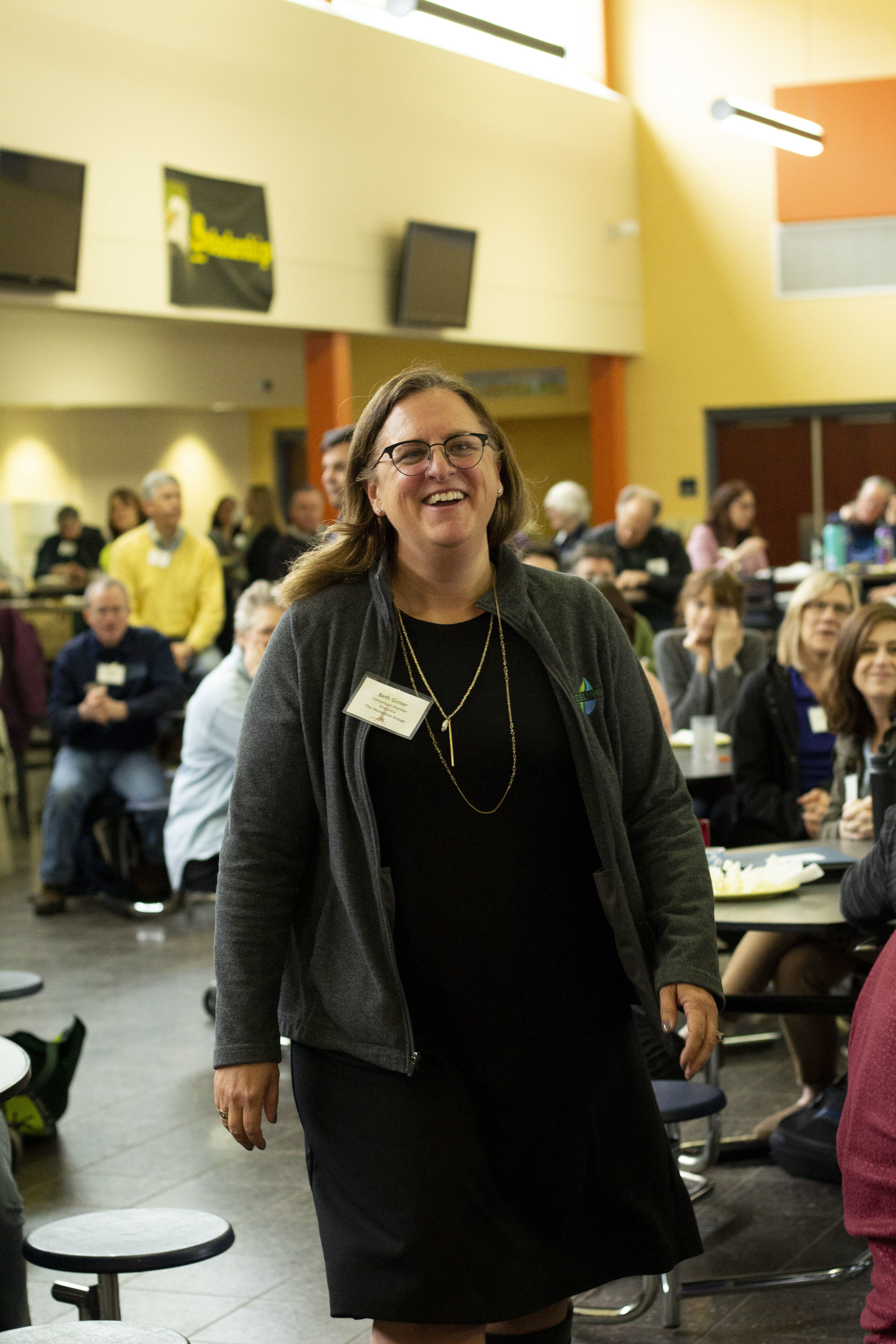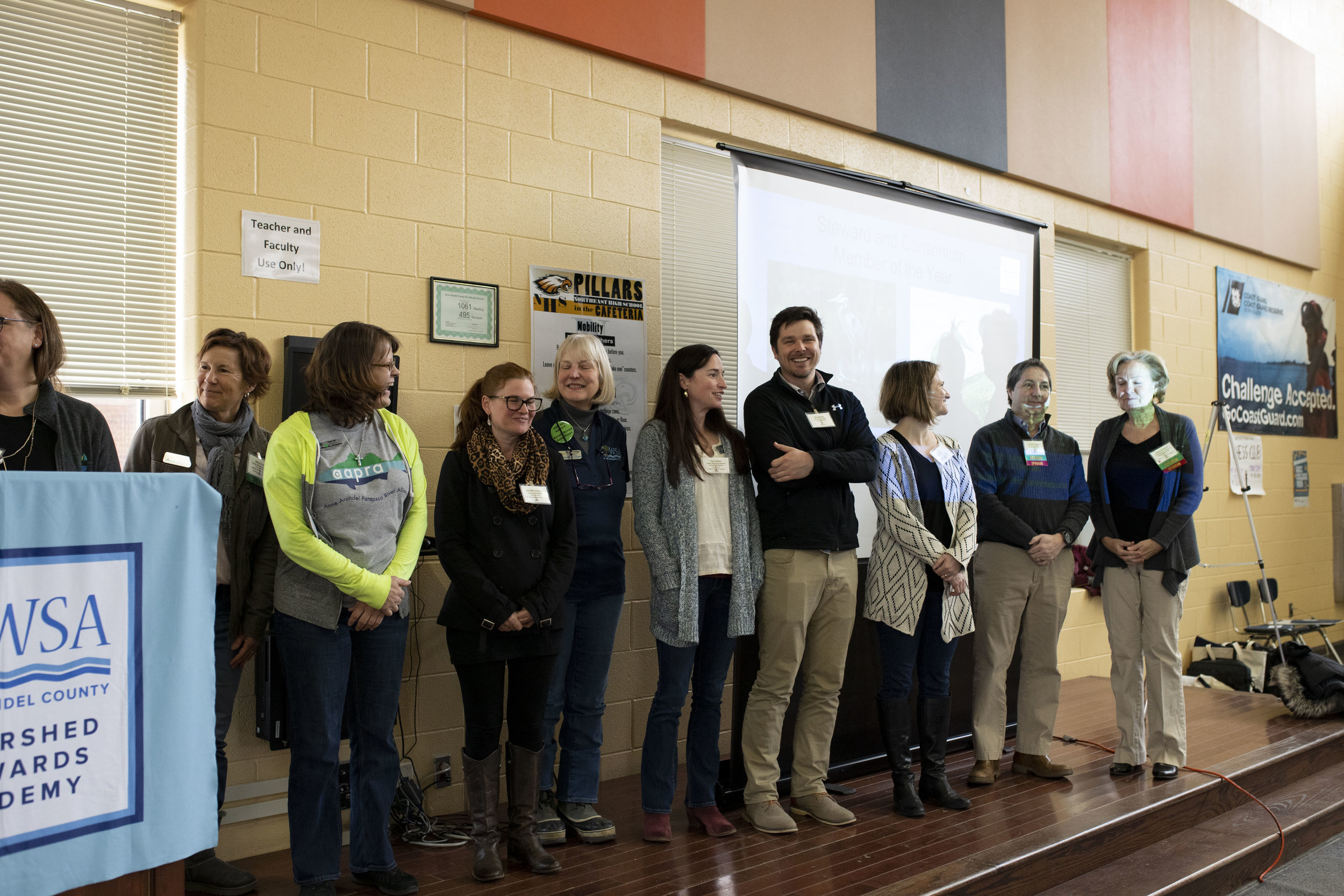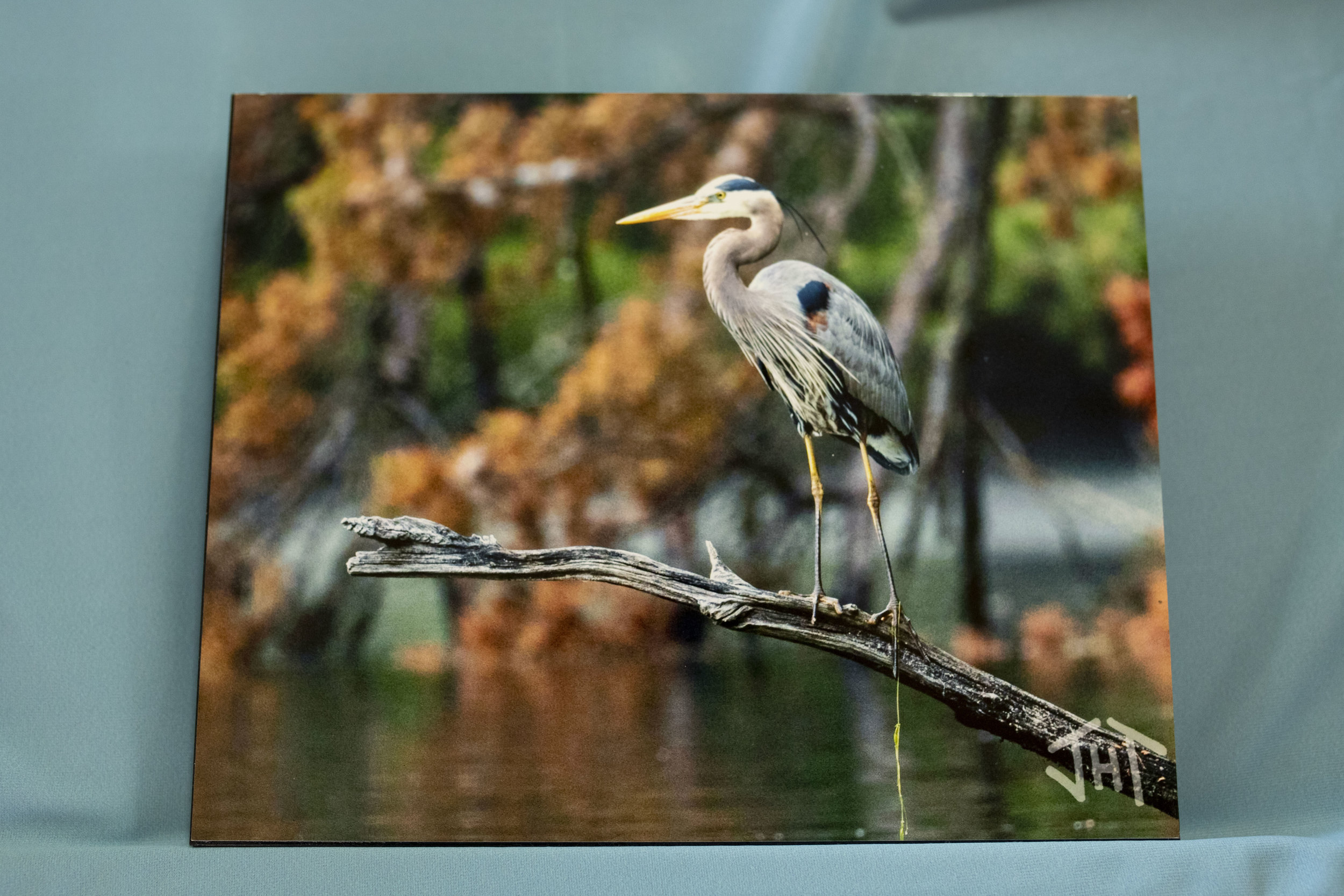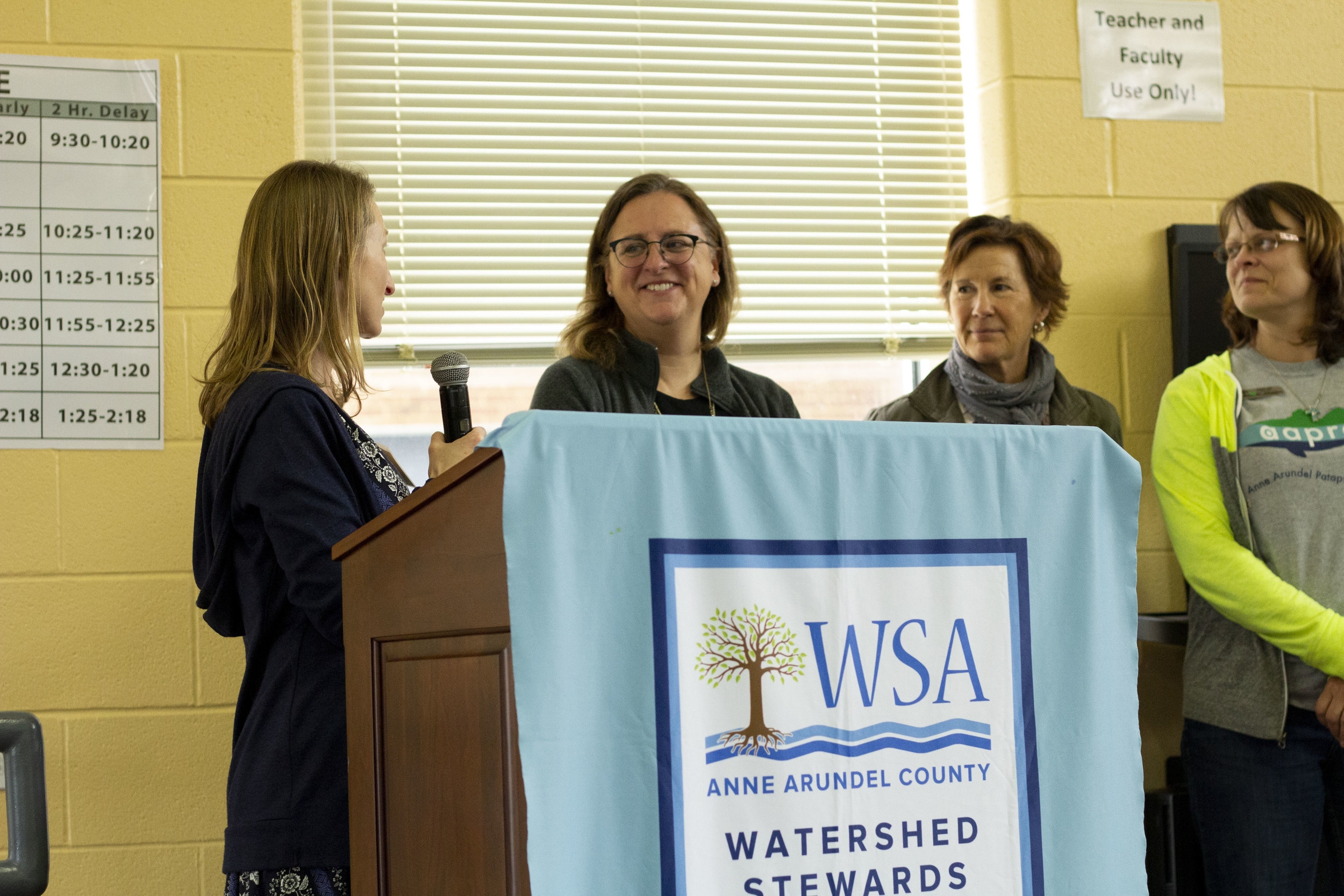Each year the Anne Arundel County Watershed Stewards Academy honors volunteer Master Watershed Stewards and the environmental professionals who support their action for clean water. The Master Watershed Steward of the Year is awarded to a Steward who excels in engaging their community to reduce pollution. The Consortium Member of the Year is awarded to an environmental professional who makes a significant impact on projects for clean water. The Master Watershed Steward and Consortium Member of the Year Awards were presented at WSA’s Annual “Spring into Action” Conference.
Master Watershed Steward of the Year Award
Master Watershed Steward Amy Clements (left) was honored for her dedication to clean water and her leadership with Spa Creek Conservancy. Amy became a Master Watershed Steward in WSA’s first certification course. Since then, she has led Spa Creek Conservancy to install over $10 million in restoration projects. Alongside Mel Wilkins, Amy led Spa Creek to complete hundreds of projects- from treating 98% of the runoff from Heritage Baptist Church to restoring whole streams in projects like the Spa Creek Headwaters Restoration. In addition to restoration, Amy continually engages her community in Annapolis. Amy led residents of Eastport Terrace and Harbor House to plant and mulch 200 trees and shrubs behind the Annapolis Housing Authority and Bates Middle School, then re engaged the community for a Kids on the Creek day to reconnect youth to the water.
WSA Consortium Member of the Year Award
Beth Ginter (right) was awarded Consortium Member of the Year for her work with the Chesapeake Bay Landscape Professional (CBLP) Certification. Throughout the years, Beth has committed to investing in the education surrounding green infrastructure. The CBLP certification teaches the professional landscape community to properly install and maintain rain gardens and conservation landscapes. In just a few years, Beth has certified over 400 CBLPs, creating a network of sustainable landscaping professionals spanning five states across our watershed.
Congratulations to Amy and Beth!


